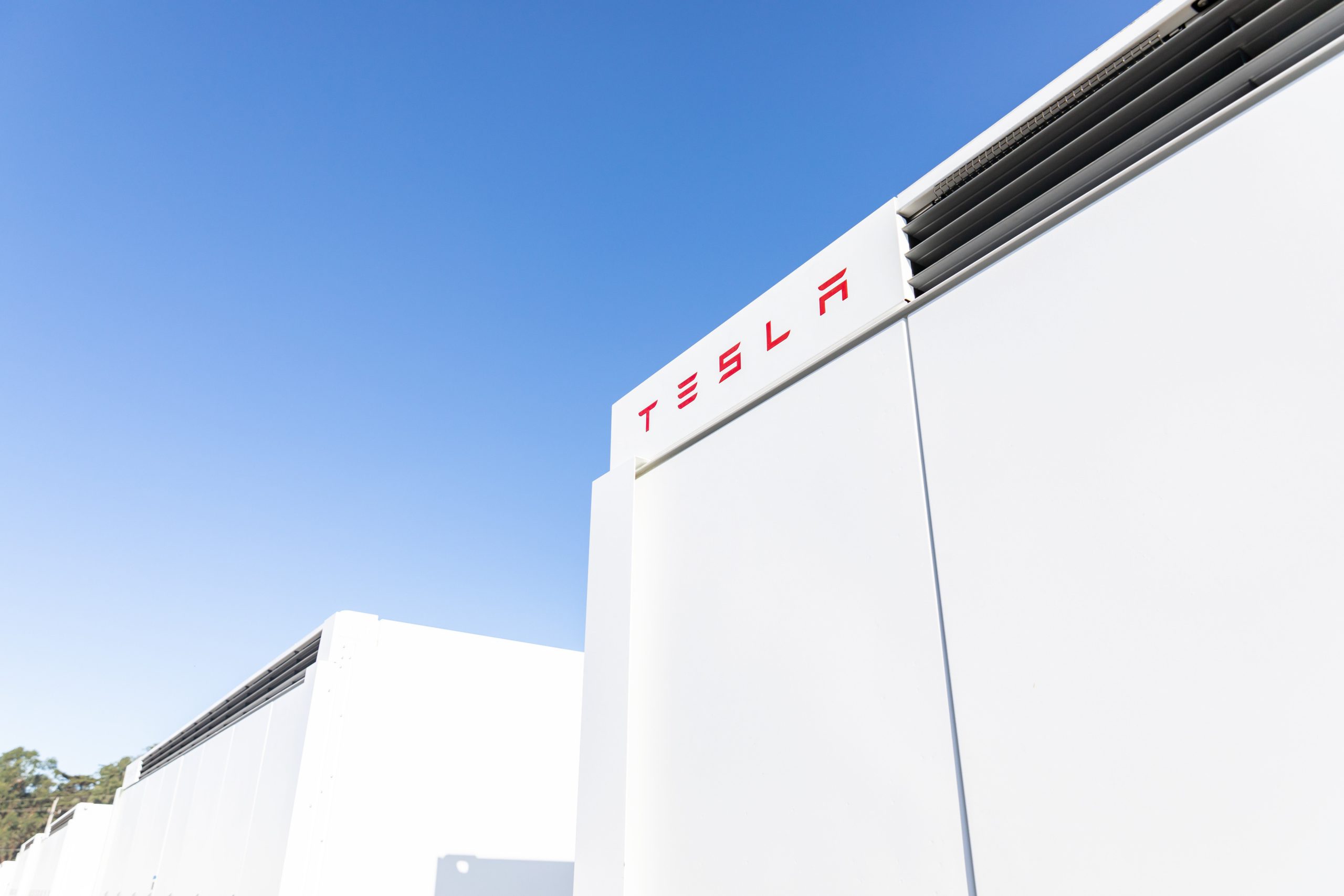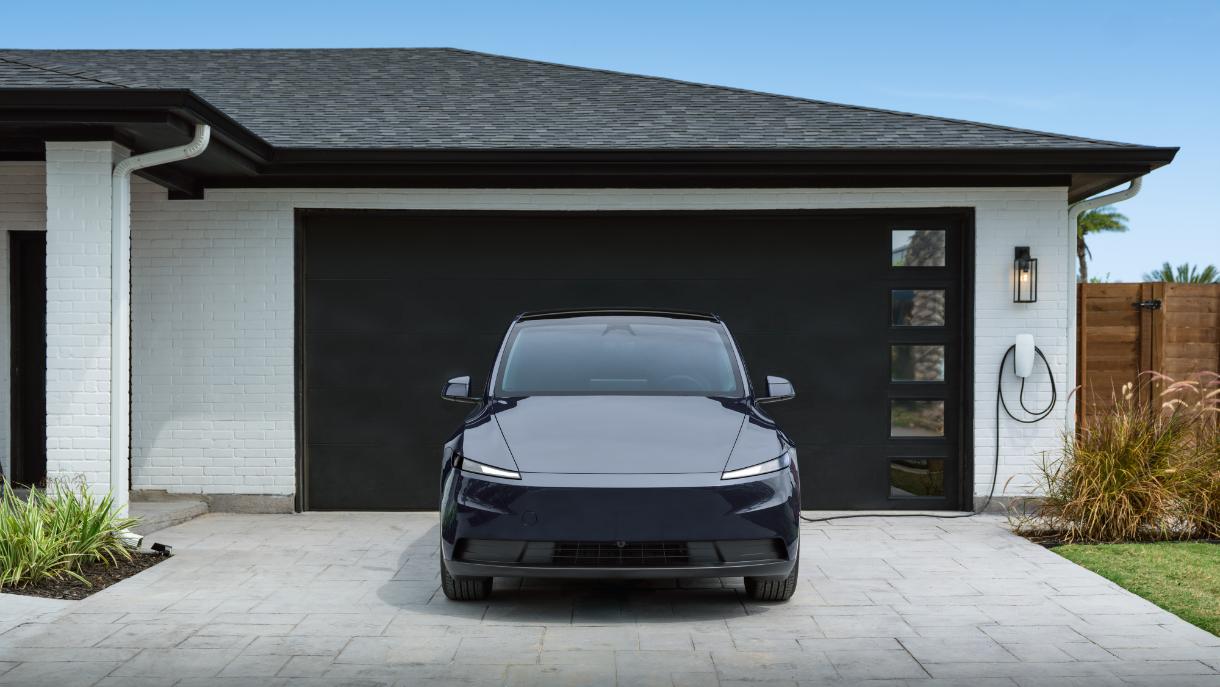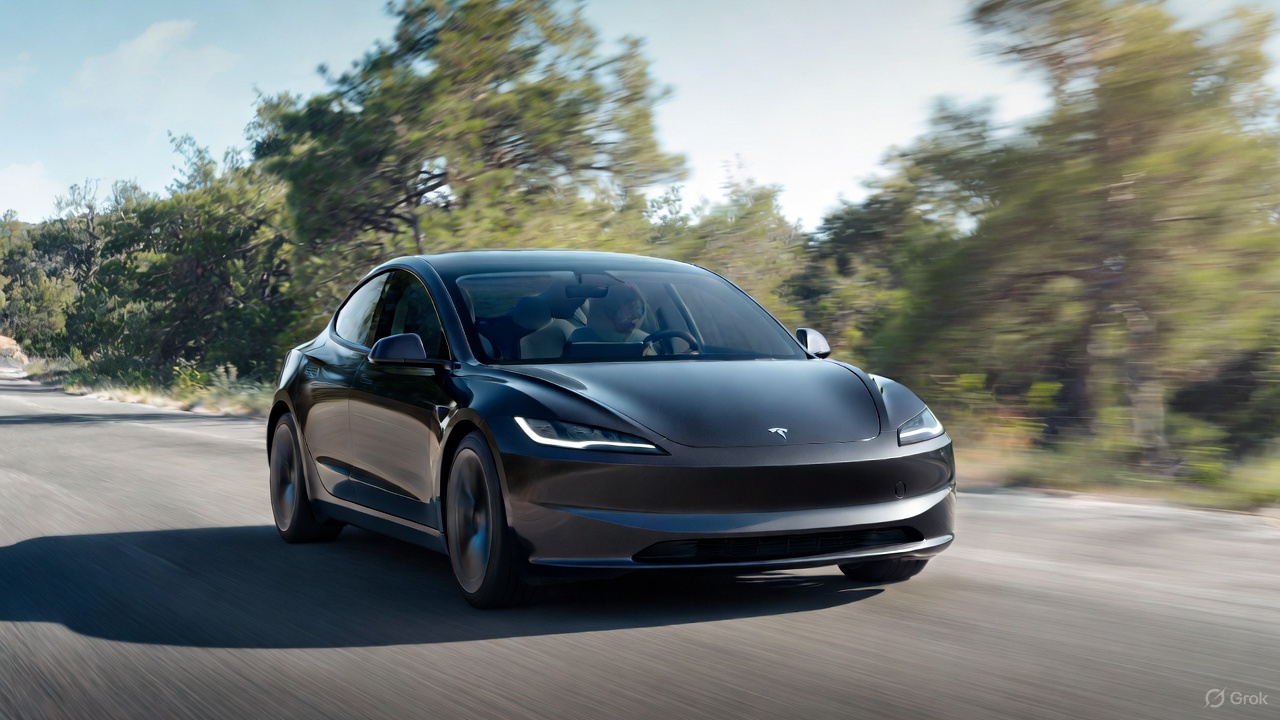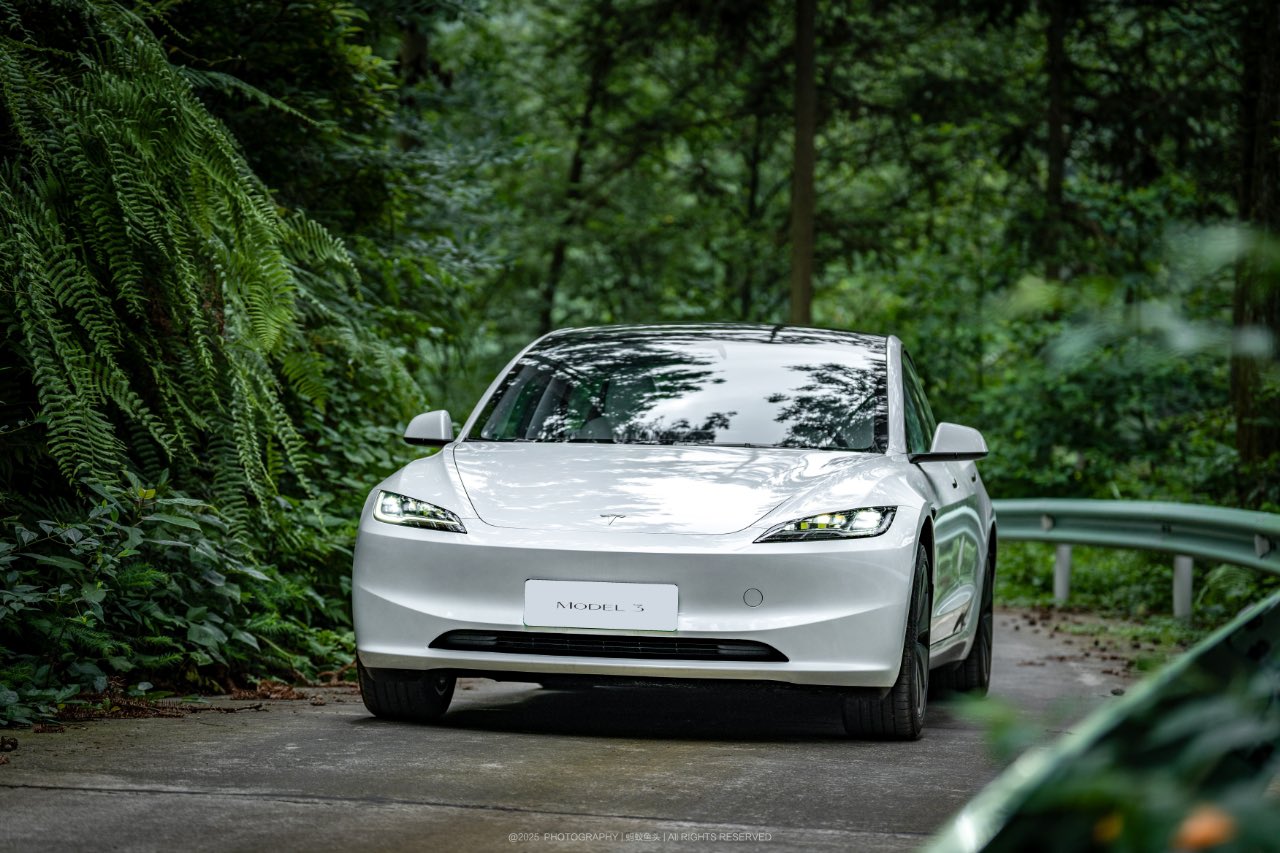News
Tesla and Arevon team up on 172-Megapack solar plus project
One of Tesla’s largest Megapack sites, the Arevon Eland solar project is supported by an impressive 1.2GWh of Megapacks.

Tesla and partner Arevon have completed the second phase of an energy storage site in Southern California, as highlighted in a short video shared this week.
On Monday, Tesla’s Megapack account on X posted a brief video on the Kern County, California “Eland” storage site, which was recently expanded to offer 300MW/1.2GWh of Megapacks supporting 758MW of solar. The so-called “Eland Solar-plus-Storage Project” site now features 172 Megapack units and 1.36 million solar panels, which the companies have previously said is roughly enough to power 200,000 homes annually.
In the video, Tesla also notes that the facility has site-level controls to regulate power output, “providing a firm resource to the grid,” and supporting the Los Angeles climate goal of reaching 100-percent renewable electricity by 2035. You can check out the clip below.
758 MW of solar supported by 1.2 GWh of Megapack at Arevon’s site in Kern County, California pic.twitter.com/HTP92uYVIP
— Tesla Megapack (@Tesla_Megapack) March 17, 2025
READ MORE ON TESLA MEGAPACKS: Tesla Megapack project in California housed in former steam plant
Arevon announced the official start of operations for Eland 1 in December with 150MW/600 MWh, and the Eland 2 phase has effectively doubled this. The company also appears to be on track for its targeted opening of Eland 2 in Q1 this year, though it’s not clear at the time of writing if Arevon has yet announced a start of operations for the second phase.
Last February, Arevon announced that it secured a $1.1 billion financial commitment for the remaining parts of the Eland 2 Solar-plus-Storage project, together with Eland 1 becoming one of the largest solar-plus-storage installations in the U.S. The projects also include a long-term purchase agreement from the Southern California Public Power Authority, which plans to facilitate contracts for the LA Department of Water and Power and Glendale Water and Power.
Tesla’s grid-scale Megapack batteries can store and deploy generated energy to the electrical grid, especially during periods of peak power usage, high demand, or outages. Coupled with solar or other energy sources in these kinds of solar-plus-storage sites, Tesla’s Megapacks can help support renewable energy for long periods of time, or at least add stability to the grid.
Over the past couple of years, Tesla has been deploying large-scale Megapack projects in markets around the world, as backed by an initial production facility in Lathrop, California. This “Megafactory” aims to eventually produce 10,000 Megapack units, or 40 GWh, per year, and it has been ramping up production since late 2022.
In November, the Lathrop Megafactory officially produced its 10,000th Megapack, and Tesla also started production at a second Megapack plant in Shanghai, China last month, after starting construction on the site last May. The Shanghai Megafactory is also expected to have a volume annual production of 10,000 units per year.
Additionally, Tesla has teased plans for a third Megafactory, though it has yet to disclose where such a facility would be built.
Tesla’s massive Megapack site near Melbourne is almost ready

News
Tesla Model Y Standard stuns in new range test, besting its Premium siblings
Tesla’s newer vehicles have continued to meet or exceed their EPA estimates. This is a drastic change, as every 2018-2023 model year Tesla that Edmunds assessed did not meet its range estimates.

The Tesla Model Y Standard stunned in a new range test performed by automotive media outlet Edmunds, besting all of its Premium siblings that are more expensive and more luxurious in terms of features.
Testing showed the Model Y Standard exceeded its EPA-estimated range rating of 321 miles, as Edmunds said it is the “longest-range Model Y that we’ve ever put on our loop.” In the past, some vehicles have come up short in comparison with EPA ranges; for example, the Model Y’s previous generation vehicle had an EPA-estimated range of 330 miles, but only drove 310.
Additionally, the Launch Series Model Y, the first configuration to be built in the “Juniper” program, landed perfectly on the EPA’s range estimates at 327 miles.
It was also more efficient than Premium offerings, as it utilized just 22.8 kWh to go 100 miles. The Launch Series used 26.8 kWh to travel the same distance.
It is tested using Edmunds’ traditional EV range testing procedure, which follows a strict route of 60 percent city and 40 percent highway driving. The average speed throughout the trip is 40 MPH, and the car is required to stay within 5 MPH of all posted speed limits.
Each car is also put in its most efficient drive setting, and the climate is kept on auto at 72 degrees.
“All of this most accurately represents the real-world driving that owners do day to day,” the publication says.
With this procedure, testing is as consistent as it can get. Of course, there are other factors, like temperature and traffic density. However, one thing is important to note: Tesla’s newer vehicles have continued to meet or exceed their EPA estimates. This is a drastic change, as every 2018-2023 model year Tesla that Edmunds assessed did not meet its range estimates.
Tesla Model Y Standard vs. Tesla Model Y Premium
Tesla’s two Model Y levels both offer a great option for whichever fits your budget. However, when you sit in both cars, you will notice distinct differences between them.
The Premium definitely has a more luxurious feel, while the Standard is stripped of many of the more premium features, like Vegan Leather Interior, acoustic-lined glass, and a better sound system.
You can read our full review of the Model Y Standard below:
Tesla Model Y Standard Full Review: Is it worth the lower price?
News
Xpeng CEO: Tesla FSD 14.2 has developed “near-Level 4” performance
While acknowledging that imperfections remain, the Xpeng CEO said FSD’s current iteration significantly surpasses last year’s capabilities.

Xpeng CEO He Xiaopeng has offered fresh praise for Tesla’s Full Self-Driving (FSD) system after revisiting Silicon Valley more than a year after his first hands-on experience.
Following extended test drives of Tesla vehicles running the latest FSD software, He stated that the system has made major strides, reinforcing his view that Tesla’s approach to autonomy is indeed the proper path towards autonomy.
Tesla FSD closing in on Level 4 driving
During his visit, He test-drove a Tesla equipped with FSD V14.2. He also rode in a Tesla Robotaxi. Over roughly five hours of driving across Silicon Valley and San Francisco, He said both vehicles delivered consistent and reassuring performance, a notable improvement from his experience a year earlier.
According to He, Tesla’s FSD has evolved from a smooth Level 2 advanced driver assistance system into what he described as a “near-Level 4” experience in terms of capabilities. While acknowledging that imperfections remain, the Xpeng CEO said FSD’s current iteration significantly surpasses last year’s capabilities. He also reiterated his belief that Tesla’s strategy of using the same autonomous software and hardware architecture across private vehicles and robotaxis is the right long-term approach, allowing users to bypass intermediate autonomy stages and move closer to Level 4 functionality.
He previously tested Tesla’s FSD V12.3.6 and Waymo vehicles in California in mid-2024, noting at the time that Waymo performed better in dense urban environments like San Francisco, while Tesla excelled in Silicon Valley and on highways.
Xpeng’s ambitious autonomy roadmap and internal challenge
The Silicon Valley visit also served as a benchmark for Xpeng’s own autonomy ambitions. He stated that Xpeng is looking to improve its VLA autonomous driving system to match the performance of Tesla’s FSD V14.2 within China by August 30, 2026. Xpeng is poised to release its VLA 2.0 smart driving software next quarter, though He cautioned that the initial version will not be able to match FSD V14.2’s capabilities, as noted in a CNEV Post report.
He also added a personal twist to the goal, publicly challenging Xpeng’s autonomous driving team. If the performance target is met by the 2026 deadline, the CEO stated that he will approve the creation of a Chinese-style cafeteria for Xpeng’s Silicon Valley team. If not, Liu Xianming, head of Xpeng’s autonomous driving unit, has pledged to run naked across the Golden Gate Bridge, He noted.
News
Another Tesla Model 3 variant sold out for January 2026 in China
A look at Tesla China’s order page shows that new Model 3 LR RWD orders now have an estimated delivery date of February 2026.

Another Tesla Model 3 variant in China appears to have sold out for January 2026, with the vehicle now showing an estimated delivery date of February 2026 for new orders. This bodes well for the all-electric sedan, which has maintained notable sales despite more affordable rivals like the Xiaomi SU7 and its crossover sibling, the Model Y.
Model 3 LR RWD joins February 2026 queue
A look at Tesla China’s order page for the all-electric sedan shows that new Model 3 Long Range Rear Wheel Drive orders now have an estimated delivery date of February 2026. Priced from RMB 259,500 ($36,810), the LR RWD sits as the second-lowest-priced trim in Tesla China’s four-variant Model 3 lineup. The move follows a similar delivery timeframe for the Model 3 Performance, which remains the most expensive option for the vehicle, as noted in a CNEV Post report.
The estimated delivery dates of the two remaining Model 3 variants remain unchanged for now. The base RWD version, starting at RMB 235,500, and the LR AWD variant, priced from RMB 285,500, both continue to list estimated delivery times of 4-6 weeks. Tesla China, for its part, has continued to list in-stock Model 3 vehicles and is actively encouraging buyers to select inventory units for delivery before the end of the year.
Model Y delays and policy shifts
Delivery timelines for the Model Y in China are also stretching into 2026. All customized Model Y variants now show February 2026 as their estimated delivery date, except for the entry-level version, which still lists January 2026. Tesla has been urging customers since November to prioritize purchasing inventory vehicles, a push aimed at maximizing year-end deliveries.
Timing matters for Chinese buyers due to upcoming changes in government incentives. China’s new energy vehicle purchase tax exemption will be scaled back in 2026, which means customers who take delivery next year could face higher tax costs compared to those who are able to receive vehicles before the end of the year.
As per data from the China Passenger Car Association, Tesla recorded retail sales of 73,145 vehicles in November, down 0.47% year over year. From January through November, Tesla’s retail sales in China totaled 531,855 units, a 7.37% year-over-year drop.








